The Mysterious Craft of Camera Movement
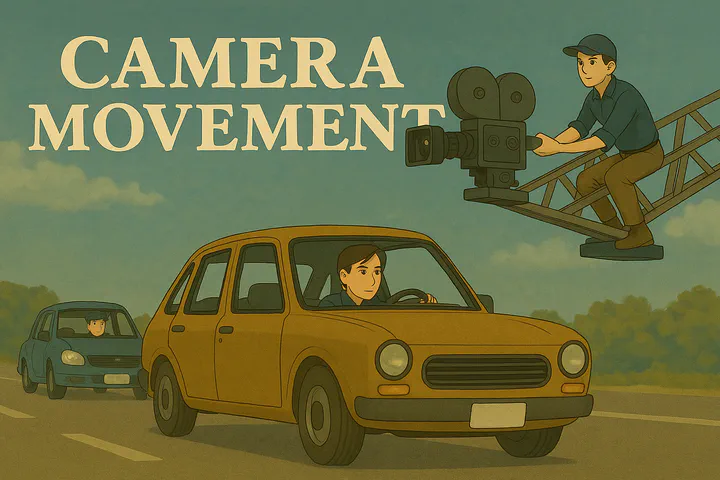 Is the camera always pointing at where we should look?
Is the camera always pointing at where we should look?Among all the topics in film aesthetics, camera movement is THE most elusive.

Why? Because there is serious lack of scholarship. There exist tons of books on editing, script writing, acting, or any other film technique. David Bordwell has written an excellent book on staging. But there is NO book on camera movement. Even essays dedicated to the study of camera movement are hard to come by. This means that there is no readymade theory that we can apply. We have to make our own. Therefore do not expect me to hand you over something super clear so that you would know everything about camera movement. We are exploring the possibilities of a theorization, and I want you to use your perceptive insights to help this theorization go further.
This principle also applies to other lectures in this course. It is not meant to hand you down some terms or rules so you can memorize. Instead I invite you to see thing by yourself. I am here to help you discover cinema on your own.
There are indeed some basic terminologies that you can learn to use:

The camera can PAN, TILT, DOLLY IN/OUT, ZOOM IN/OUT, TRACK and FOLLOW. (But the camera cannot “CUT.” Don’t ever say that.)
What’s the use of these terminologies? Can serve as a classification system? Film scholars have already done exactly that, such as film historian Barry Salt.

Despite Salt’s admirable confidence, I doubt if the accuracy of these data can be independently verified. I also imagine that the categories Salt needs to work with will become unbearably long if he wants (as I image he would) it to be exhaustive. For a contemporary film one needs to add handheld, Steadicam and many other type of camera movement or digital post-production pseudo movement. Ultimately, there is a big, ontological problem of studying camera movement this way.
Seeing Camera Movement
How do we see, and then identify camera movement?
We say we see a camera movement, but it is a different case than, say, a character movement, for the subject of the former is never visible on the screen. When we say we see camera movement, we never actually see the movement of camera, or a moving camera. What we see is movement of perspective that we attribute to that of the camera (only rarely do we actually see it, e.g., in Godard’s Contempt, but that is precisely a challenge to the norm).
The invisibility of the camera is a kind of its own — it certainly is off screen; but, unlike other objects that are off screen, whose invisibility is temporary when the camera comes to their rescue, the camera’s invisibility is permanent.

This invisibility is not a mere inconvenience, for, when the chance comes where the camera can be seeing and seen at the same time (e.g., in front of a mirror), the camera invariably hides itself.
This ontological invisibility poses a risk for us, for whenever we talk about how the camera moves, we talk about something that is beyond our direct sight, something we can only infer, with variable degree of certainty.
Camera movement is, one might even say, a perceptual trick played on us.
In our last class we talk about the art of staging, exemplified by a film with absolutely no camera movement. That gives us the following question: why move it? Is moving a camera easier than to put it on a tripod and let it sit still?
Bordwell in an essay titled “camera movement, the coming of sound, and the Classical Hollywood style” offers some hypotheses, but he is talking more about a historical situation. What is the status-quo now?
- Most of the time people don’t even think about it. They move the camera because movement is at their fingertips. Nowadays it is actually easier to move the camera than to find a position that can cover the whole scene. You need to put efforts into staging. A mobile view gives instant gratification; it follows our desire to see. But being able to move the camera doesn’t mean we have artistic control over the movement. Do we really know why we need to move it? Have we studied if there is a way to keep it still? Have we explored all kinds of movement possible?
- It may happen that you cannot find a good camera position that can cover everything you need. But you still want to preserve the space-time continuum, which editing can never do really well. Therefore you have to move the camera.
- Now that we are moving, why don’t we make the movement itself part of the artistic intention? Like dance, movement of the camera can embody intention.
- In addition, perceiving self-movement is a source of intense visuo-kinetic pleasure for a human being, not to mention a cinephile.
- Finally, to move the camera in unique ways is a self-imposed challenge for filmmakers; it evokes a virtuoso modality. This explains why there are so many opening shots opt to execute complex camera movement. It is a gesture, a signal of what the film is about.
…
The Opening Contest
Next time you watch a movie, pay close attention to how it begins: the opening shot. The opening scene is often the most important in the whole film. This of course doesn’t mean you already have a climax in the first shot. It means that the opening often sets the tone and mood for the film; it shows us what kind of film this is, and what caliber of filmmaker we are looking at. If the first five minutes show a lack of imagination, then most likely the rest of the film won’t get any better.
Touch of Evil
One of the many things the camera movement does here is to preserve the real time of the event. We see the bomb being set, and we start counting. All the while the camera seems wander aimlessly in the space, we are waiting for something dramatic to happen. Welles gives us a palpable sense of suspense enhanced by the bomb that is about to go off.
But is that all we can say about the camera movement?
When watching this sequence, think about following questions, which is the kind of question we should think about watching every camera movement:
- How would we describe this movement? By its trajectory? Its function?
- What is the intention behind it, and your perception of that intention? Does the physicality of movement calls for attention?
- Is camera movement a stylistic choice among others?
- What would be the effect if we do it differently?
Now for something completely different. Another opening shot, from Hou Hsiao-hsien’s Flowers of Shanghai (1998).
Flowers of Shanghai
This is entirely shot indoor. So is the entire film. Here there is no suspense, no bomb under the table about to go off. But what is there? One critics describes the scene as the camera,
“moves almost imperceptibly, swiveling from side to side, organically and not schematically, the better to catch this nuance of conversation or that movement of figure.”
Why does he use the word “organically”, and what does it mean to move schematically? Again, go back to our check list, and examine the movement’s trajectory, function, intention & perception, physicality, etc.
The opening shot from Flowers of Shanghai is 8 min. Next up is a 10 min shot from Hungarian Master Bela Tarr’s Werckmeister Harmonies.
Werckmeister Harmonies
Why is this shot 10min? Because that is as much as the 35mm film magazine can hold! (24 frames per second multiplied by 60 is 1440 frames, one foot equals 16 frames, so one minute of film has 90 feet. A film magazine can hold 952 feet, which gives around 10 mins recording time)
The whole film has only 38 shots and lasts 145min. This is average shot length of 230 seconds. Compared this Man with a Movie Camera’s 2.3 sec, it is 100 times longer!
While the above examples demonstrate a carefully calculated, elegant kind of movement, the following, enabled by handheld camera, wants to convey the opposite kind of emotion.
Children of Men
Although Cuarón is known to use digital post-production to suture together different shots to make them look like one shot, I do believe this is indeed one shot. This is definitely hard work, but the result is also most impressive. The price one needs to pay is that such a scene has to be extensively rehearsed. Why bother? What is the effect of seeing all these in one continuum, without being cut up by editing?
Now, there was in the history of filmmaking a real attempt to make the shot longer and longer, so that eventually one single shot would be the whole film. This is definitely a formal experiment. What would be the options? There are only two. Either you act out the whole film in front of a fixed camera, or you use camera to wherever it needs to be for the entirely duration of the film.
Historically there are only a few such notable attempts. One of the earliest was in the 1940s, by Alfred Hitchcock.
Rope is not a seamless film, despite its appearance (same can be said of the recent Birdman). Due to the capacity of film magazine and projection reel, a film has to have cuts, but Hitchcock made it this way so that these cuts are carefully hidden. The film contains 4 projection reels cuts+ 5 magazine cuts + 3 additional cuts = in total 12 cuts.
With the advent of digital camera, recording film on a hard-drive bypasses the problem of film magazine capacity. Alexander Sokurov, a tireless experimenter, did in 2002 one such experiment.
Russian Ark
Russian Ark lasts about 94 minutes and involves over 2000 actors. Now that recording time is no longer a problem, the filmmaker gave himself another one: choreography. Anything that goes wrong will ruin the whole film and one has to do it from the very beginning! But what does one gain from this choice? Does the constantly moving camera really give us a sense of authenticity because it maintains a true spatial and temporal continuity?
Functional categories
Roughly speaking, a camera movement may fulfill the following functional categories:
- coverage: reframing, following, passive and active movement.
- compositional: change of shot scale, compositional stops (intra shot stasis)
- visuo-kinetic: exploring depth, circling, elevating, hovering, etc…
- other: some of the more interesting ways to move a camera
Many of these functions are self-explanatory, especially in the coverage category. The camera will reframe to keep characters inside the frame, or it may explicitly follow one or a group of characters on the move. In these circumstances the movement is perceived to be passive: it is initiated by character movement and maintains a stable perception of the said character(s). An active camera movement, on the other hand, moves to generate a different perception. It can also be initiated by the character movement. But it moves to break previous shot scale by going different direction.
I use the term “compositional" to describe the kind of camera movement that aims to bridge two compositions: the start and the end. These two positions afford a stable perception and allow us to focus on the performance: facial expressions, dialogue. This kind of movement sometimes, but not always, involves a change of scale. The camera may dolly in or out to get a tighter or looser framing, or it may move sideways to focus on a different character in a similar scale. If you do this latter quickly, it is also called a whip or swish pan.
Also, it is unfair to classify a shot as either one with camera movement or one without, because it may contain duration of movement and duration of non-movement. These intra-shot stasis may be called compositional stops. The stylistic contrast between movement and non-movement inside a shot is of equal importance to those between the shots.
As for the visuo-kinetic function, it is something that is extremely popular these days. The camera just won’t stop. Instead it will slide in/out, move in circles. Does it give more coverage? Not always. Is it motivated by characters? No. Then what is the idea? The idea is that it offers a continuous visual variety, and it dynamizes the diegetic space. It makes us the audience experience the space as the camera traverses in all kinds of fancy trajectories. The only problem is that it is not always justified by storytelling (or anything else) and it distracts.
Recall the example in Touch of Evil. What categories does it fit in the above? Now try to do the same with other examples mentioned. Do you feel that the camera does something that is not covered by any of the above three categories?
Now it is time to break down the fourth category to have a closer look.
The first function I want to single out is called surveying.
A classical example of this function is the opening shot of Rear Window.
You see the curtains going up, by an invisible stage hand, like in a theater. The camera dollies in to the window sill. Cut to a curious cat going along a route that later some curious women will do. Motivated by the cat’s movement but soon leaving it behind, the camera tilts upward and pans left, tilts down, pans left again and finally imperceptibly arrives back inside the room. Compositional stop of Jamie Stewart’s sweaty forehead. Insert of the thermometer and the middle-aged man. Repeating the same movement to less close framing of Stewart’s face. Stop. Move down to his legs: “”here lies the broken bones of L. B. Jeffries". Stop. Pulling away and tilting up to have a brief moment of Jeff’s whole body. Stop. Pan and dolly in to a broken camera on the table. Stop. Photos of dangerous sports and natural disasters. More camera gears. A framed negative of woman. Stop. A stack of fashion magazines with the same photo. Stop. Dissolve to dark.
What is the camera doing here? It first introduces the room, and then goes on to make a survey of its belongings, hence the name. From examining these belongings we now have a good idea of the owner, who is either absent or unconscious. This technique is the functional equivalent of the long descriptive passages in a novel (such as by Balzac or Zola) that gives us every detail about the furniture. Another similar example can be found in Jean Renoir’s The Crime of Monsieur Lang.
Which begs the question: who is surveying?
The next function is shifting register.
In Chinese poetry one often finds the same technique: first, things seen far away, snow in the sky; and then birds chirping on the tree in the yard; and finally our melancholic protagonist. This is cinematic storytelling before the invention of cinema. It gives the reader or viewer a smooth, gradual approaching of your topic.
It can also be used in reverse, as seen in numerous Hollywood endings where the camera will crane up to reveal a vast horizon towards which our triumphantly surviving heroes walk toward.
Psycho
In the opening of Psycho, we zoom in from a cityscape to a specific building (dissolve), to a particular window (cut) or room where we find this woman Marion in her lunchtime tryst. It is a move from the general to the particular. What might be implied here is that similar tryst could be happening anywhere else.
Camera movements can be remembered and recognized. And as such they can work in pairs and thus bring two moments in a film together in unexpected ways.
Patterning is a strange function.
The above video has two segments from the same Max Ophuls film: Letter from an Unknown Woman. Lisa (Joan Fontaine) is secretly in love with a handsome pianist living in the same building, Brand (Louis Jourdan). On the eve of her move to Linz, she watched him bringing woman to his apartment from a specific spot on the stairs. The camera hovers above her, like her guardian angel. Heartbreaking. So far so good. Several years later, Lisa comes back as a grown woman and she becomes herself the woman whom Brand brings to his apartment. Now the camera, with a characteristically elegant move, still hovers there to watch. Our ability to recall this camera movement gives additional meaning to the scene: who is watching now? Is she finally happy (because she made it to the room) or is she totally hopeless? Does the camera movement embodies a moral statement (from the filmmaker for example) that criticizes but still sympathizes with the heroine?
Bracketing is a strategic placement of camera movement at the beginning and end of a sequence that mainly consists of symmetrical shots and connected by editing.
The opening of Touch of Evil presents a strong contrast between camera movement and editing, but the same contrast can be implemented this way:
The camera dollies in on this honeymoon couple and through a series of shot/reverse shot, compresses the time during which their marriage deteriorates. When the camera dollies back to where we started, we are shocked to see that the breakfast table, an emblem of their affinity, has widened considerably. In one short passage, Welles demonstrates the profound psychological truth: one has to come to a sudden realization like this to understand that marriage is already dead.
Another rather peculiar instance of using camera movement to bookend a series of symmetrical editing can be found in the following film by Ophuls.
The absence of our heroine, Lenora, is accentuated by the highly conspicuous camera movement that both originates and concludes this conversation between the two doctors, who are deciding her fate.
Jean-Paul Sartre’s once said, every novelistic technique can be traced back to a metaphysics (in relation to Faulkner and Dos Passos). Maybe the same can be said of cinematic techniques. Jacques Rivette is perhaps of this opinion when he wrote in his review of Kapo, titled “of abjection":
Look however in Kapo_, the shot where Riva commits suicide by throwing herself on electric barbwire: the man who decides at this moment to make a forward tracking shot to reframe the dead body — carefully positioning the raised hand in the corner of the final_ framing — this man is worthy of the most profound contempt.
In fact this is a very quick and brief move. It starts from this framing:

And it ends here:

As you can see, it consists of dolly in. Rivette misremembered the scene: the hands are NOT in the corner; the position of the body in relation to the frame does NOT change; and there is also a CU insert before the tracking shot.
Yet we can understand why he reacts to this camera movement with such moral vehemency: it dramatizes the death of the heroine, as if to put her under a spotlight with subtitles: behold, what a death!
Consider this reaction to Godard’s famous statement: tracking shots are a question of morality. Perhaps it helps us to understand the following shot from Godard’s Weekend.
The tracking shot used here (with some text inserts, as is customary of Godard) is by itself very simple, but nevertheless effective in what it does. On the surface, what the shot does is a gradual revelation of the space; but what really matters, what comes through as the message is its relentlessnesses and poignancy. It is a perfect unification of form and content.
Nowadays it has become too easy to move the camera. Hence it means too little. Camera movement has become ubiquitous, but many elegant uses of cm are almost forgotten by today’s filmmakers. Apart from some exceptions most films contain both camera movement and editing. If you want a film to be an organic whole, there needs to be an organic relation between camera movement and editing.
Think about the Touch of Evil example, where there is a very strong and effective contrast between smooth movement and rapid editing, between long duration of the first shot and the burst of shots that follow. Ultimately, a film is about the art of offering visual variety, and camera movement is an important source of that variety.
Now I have an open question for you: in those circumstances of long in-shot stasis, what is the point of not breaking it up into several shots?
A lesson in physicality
Human beings have a very specific way of understanding movement — instead of asking “what exactly is the movement”, we ask, who moves? How would you describe this creature that moves?
The bodily sensation of perceiving self-movement is a complicated issue. To simplify the matter, let’s say there are historically three kinds of camera movements that generate very distinct perceptions.
- Camera as a machine on a pedestal/wheels/crane: this is the norm of professional operation. The camera goes where it needs to go without calling attention to itself. But you feel that it is always grounded. This physicality can be described as heavy but smooth and stable.
- Camera as an organ attached to human body: the handheld camera’s characteristic shaky trajectory is also a very established convention, first exemplified in war time newsreel and then later used in documentary films to invoke a sense of authenticity. The unsteadiness becomes almost a synonym for human vulnerability.
- Camera as a floating ghost? Steadicam offers a weird, out of the body experience, which is extended in modern CGI made camera movements. This kind of physicality was initially perceived as creepy, precisely because it cannot be associated with a machine or a human being as the subject of movement. But it might well become a norm of the future.
Let’s us try to feel the camera in the following scene.
Soy Cuba (1964): absolutely mesmerizing even for today’s audience
How would you describe the subject of this movement? How do you imagine this scene was shot?
Now watch the Boogie Night reenactment of the Soy Cuba sequence:
“I feel proud that we came back up out of the pool for dialogue,” Anderson adds.
How would you describe the way Anderson and Kalatozov did things differently? What has changed in the ways camera moves? Why did Anderson insists on using a handheld instead of Steadicam (which the crew brings to location everyday but never get to use it)?
Landmarks of camera mobility
Camera mobility is not easy to quantify. But in the history of cinema we see different cameras offer different degree of mobility. The Edison camera, kinetoscope, was a heavy box not designed to move around. Yet,
- In 1895, the invention of Lumière cinématographe signifies a new stage of good mobility. The Lumière cinématographers were able to travel the world and bring back footages shot in all kinds of circumstances.
- This mobility was fatally compromised in 1926 by Warner Bros’ Vitaphone camera, which has almost zero mobility. Innovative filmmakers such as Ruben Mamoulian tried to put this little wood “bungalow” on rubber wheels and it takes “about eight husky men to keep it from shaking from the inadequacies of the studio floor and to keep it moving.” By liberating the camera Mamoulian managed to make one of the most daring works of the conversion era: Applause (1929).

- The blimped camera regained some mobility with the use of dolly and tracks. From 1934 onwards, studio films were characterized by a staple camera (e.g., the Mitchell BNC weighed 135lb) that moves like a robot.
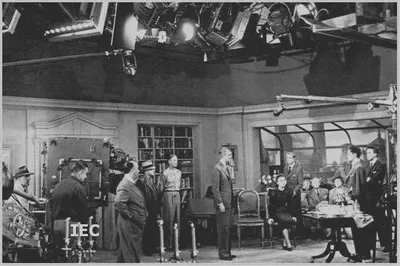
- Post-WWII amateur filmmaking and a movement called cinema vérité started a proliferation of handheld camera uses, which results its current stylistic association.
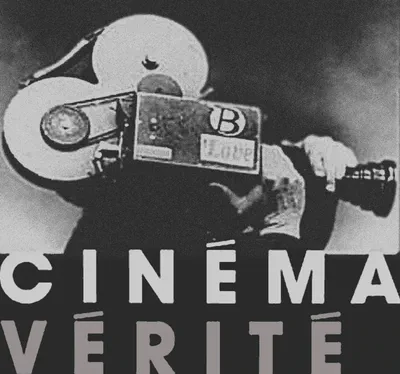
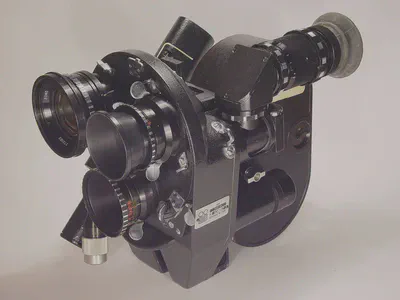
- In 2013, Gravity picked up the design of three axis camera rotation that first appeared in Michael Snow’s La Region Centrale (1971).
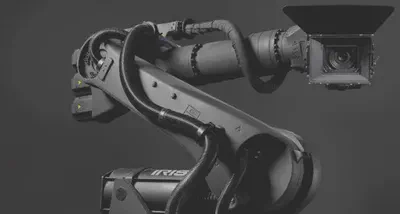
- Since 2000s, wearable cameras such as GoPro and Google Glass started to offer excellent mobility that points to a future of ubiquitous camera movement.
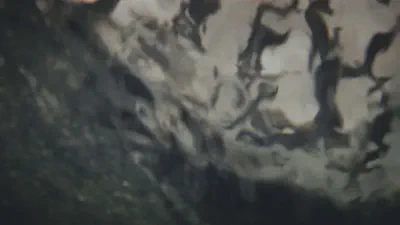
What can we learn from the history of camera mobility?
Some of the early cameras (such as cinématographe) are already portable but not good for handheld use because you need to crank it. You don’t want to hold it in one hand and crank it with another. And you need a third hand to do the focusing!
Soon, cranking can now be done electronically. But now with the wires, the camera lost mobility. There were some shots made in handheld style in the teens; but these are rare exceptions. The technical difficulty prevented the style from flourishing. In the meantime automatic non-electrical cranking system were being developed.
Compact camera with automatic cranking system (e.g., Aeroscope portable kine, circa 1910) facilitated the war newsreel genre.

At this point, although the technical problems are considered solved, handheld still didn’t get much use outside the sphere of war because there is no aesthetic demand. Regular filmmaking shun away from such uses.
In the 1950s, however, many military technologies are being transferred to non-military scenarios. And there was a boom in amateur filmmaking. Previously you can shoot handheld style, but nobody wants that shaky image. Now, the shaky image became a fashion; it became part of the message the filmmaker wants to deliver. New aesthetic demand solidified the bond between technology and style.
Steadicam was introduced at 1975 by Garrett Brown and was quickly used in a number of films in 1976. It has a humble beginning, created first simply to overcome a physical obstacles of shooting.
Steadicam in Rocky (1976). The stairs in front of the Philadelphia museum of art are now called Rocky steps.
A much more extensive use of steadicam can be found in Kubrick’s The Shining (1980)
For grounds such as this dolly shot is impossible, but why don’t they just use handheld?
What exactly is the meaning of handheld these days? Now it doesn’t mean it needs to be held in hand, but rather, the camera is supported by the human body (e.g., strapped to the chest) and inherits its pattern of movement.

Although there are down times, the general trend of camera mobility is definitely going up, towards ubiquity.
The Curious Case of Zoom Lens
A lot of people didn’t realize that zoom lens became available in the early 1930s. The famous opening of Love me Tonight (1932) already has a zoom (the chimney). But its uses remained discouraged for a long period of time and didn’t become widely accepted until the 1960s. What followed is a period of global abuse of zoom lens in the 1970s. To find out the extent of such abuses, just watch a number of Shaw brothers martial arts films and count the number of zooms. This abuse prompted global aversion to the technique, which was felt as violent and against the preservation of spatial continuity. Since then the use of zoom has been associated with a kind of amateurism, that is, its presence is often justified by diegetic use of camcorder etc. But digital effects gave a new birth to zoom, as found in the following clip from Limitless (2011).
infinite zoom
In a sense the limited acceptance of zoom is not unlike the case of color, which was initially understood to fit only certain genres (Disney cartoons, musicals, and other fantasy genres). The technicolor process was invented in the teens, and kept perfecting itself. By 1930s, the technology was mature enough (the three strip process) to use in feature films such as Becky Sharp (1935). Technicolor was eventually replaced by Eastmancolor and other processes, but the last film used this technology is Godfather II (1974). Color films however did not appear widely before 1950s.
Summary:
- camera movement is not about what actually moves but about how we perceive the movement.
- it serves functions, conveys emotions and is itself a source of visual pleasure.
- camera movement is a stylistic choice among others and it has to be integrated with other choices in the organic whole of the film
What is the future of camera movement? With the ease of digital suturing, does the term still mean anything? How will the extreme portability of GoPro cameras affect our perception of camera movement?